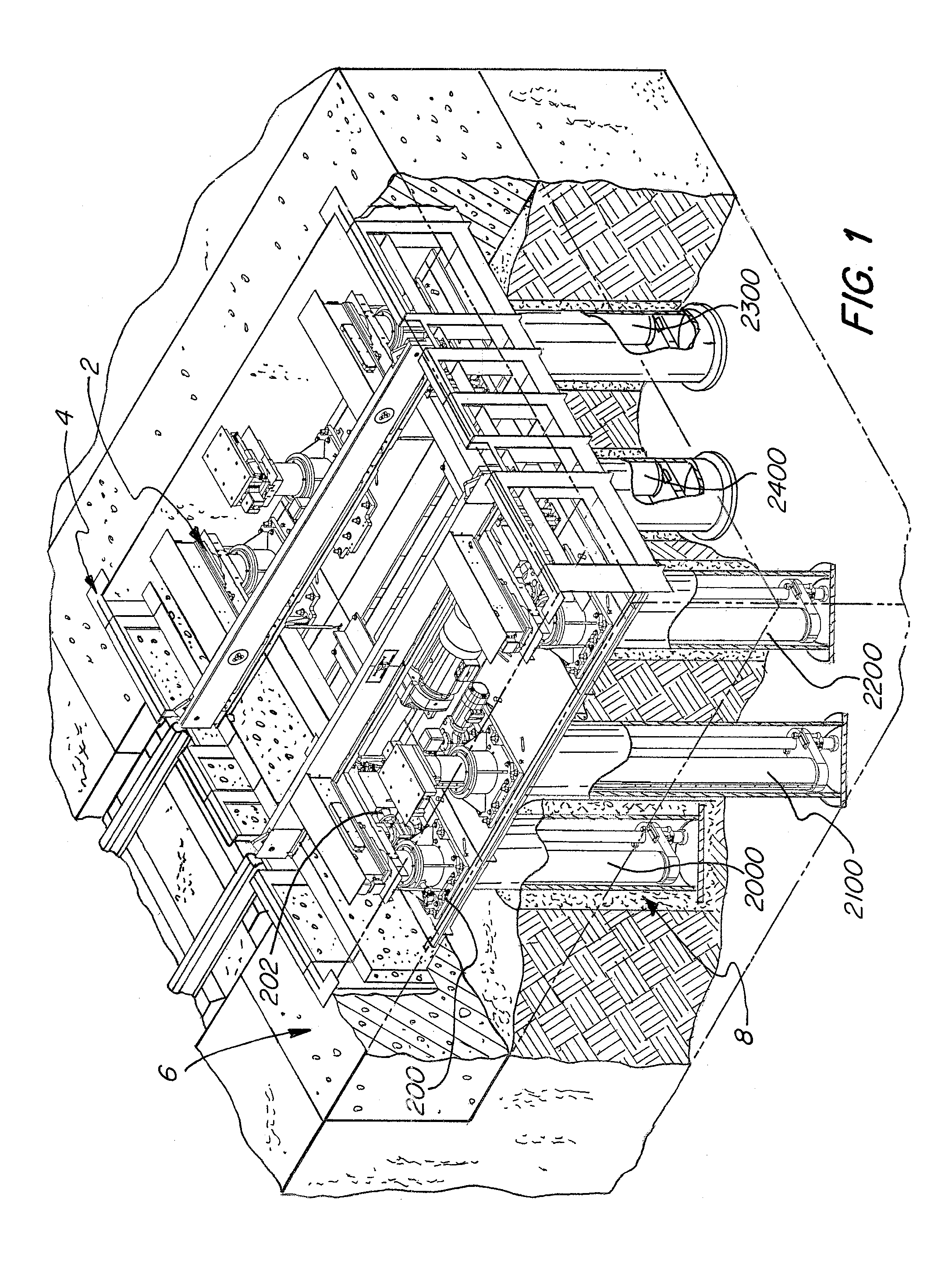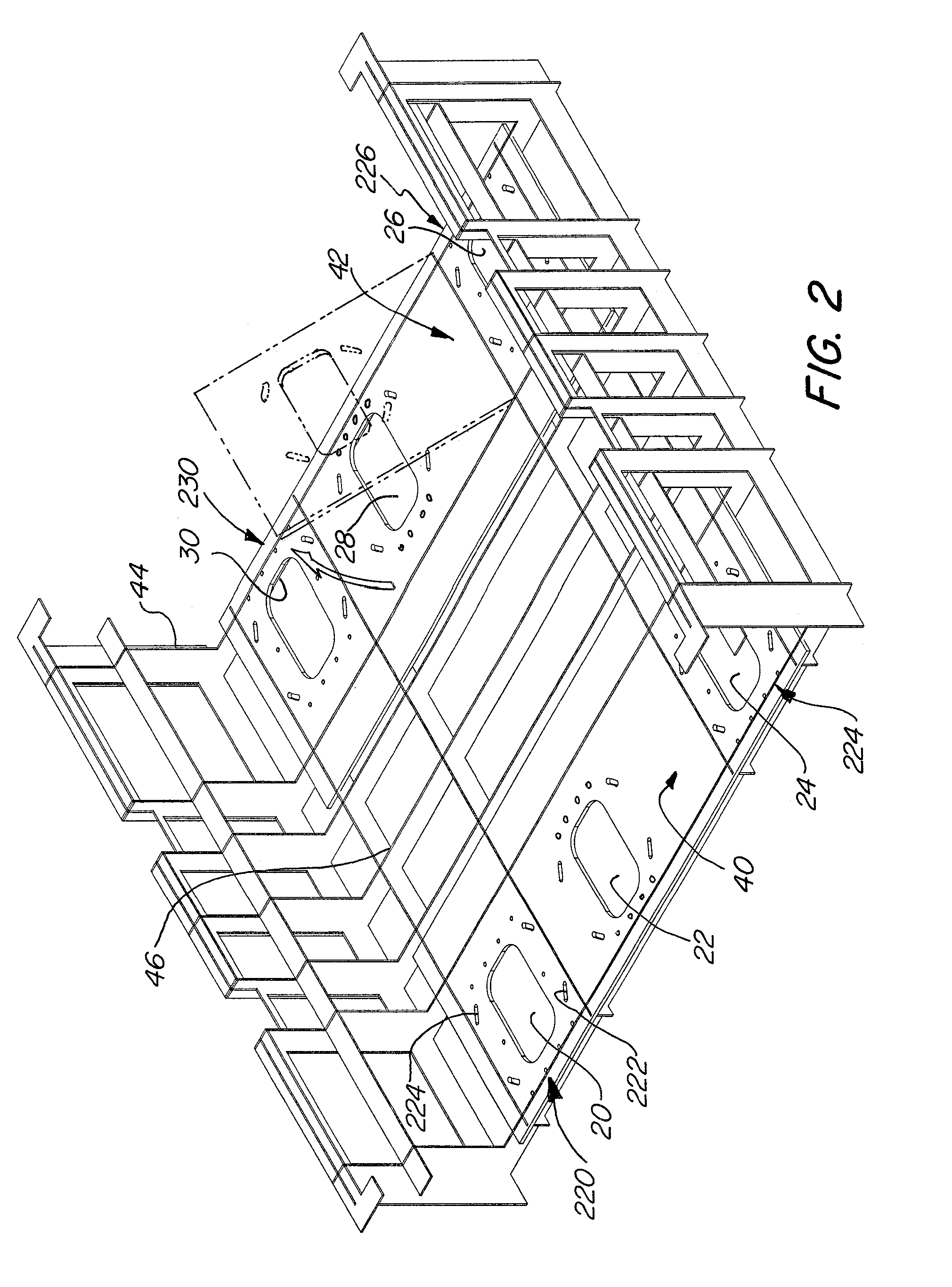Machinery Foundation Module
a technology of machine foundation and module, which is applied in the direction of foundation engineering, excavation, construction, etc., can solve the problems of affecting the quality of construction, so as to reduce or eliminate the need for modification
- Summary
- Abstract
- Description
- Claims
- Application Information
AI Technical Summary
Benefits of technology
Problems solved by technology
Method used
Image
Examples
Embodiment Construction
[0033]In FIG. 1, machinery 2 is installed in a foundation 6 using a frame module 4 that may be sized to receive all or part of the machinery therein. The machinery includes flanges 200 and the frame module has attachment points that allow for bolts to affix the flange to the foundation. There are multiple levels or pits 8 below the frame module 4. These pits allow for part of the machinery to extend into the pit. As shown, the machinery includes rails for receiving a rail vehicle. The wall of the foundation may have two sections as shown that define a lip. As shown, the rail supports of the machinery can rest on the lip at the bottom position in order to support the load at the ends of the rails and to provide additional resistance to deformation.
[0034]In FIG. 2, a number of attachment locations are shown, for example 220, 224, 230, 226. These attachment locations have holes arranged in a pattern around a machinery hole 20, 22, 24, 26, 28, 30 to receive bolts. The bolts receive the ...
PUM
 Login to View More
Login to View More Abstract
Description
Claims
Application Information
 Login to View More
Login to View More - R&D
- Intellectual Property
- Life Sciences
- Materials
- Tech Scout
- Unparalleled Data Quality
- Higher Quality Content
- 60% Fewer Hallucinations
Browse by: Latest US Patents, China's latest patents, Technical Efficacy Thesaurus, Application Domain, Technology Topic, Popular Technical Reports.
© 2025 PatSnap. All rights reserved.Legal|Privacy policy|Modern Slavery Act Transparency Statement|Sitemap|About US| Contact US: help@patsnap.com



